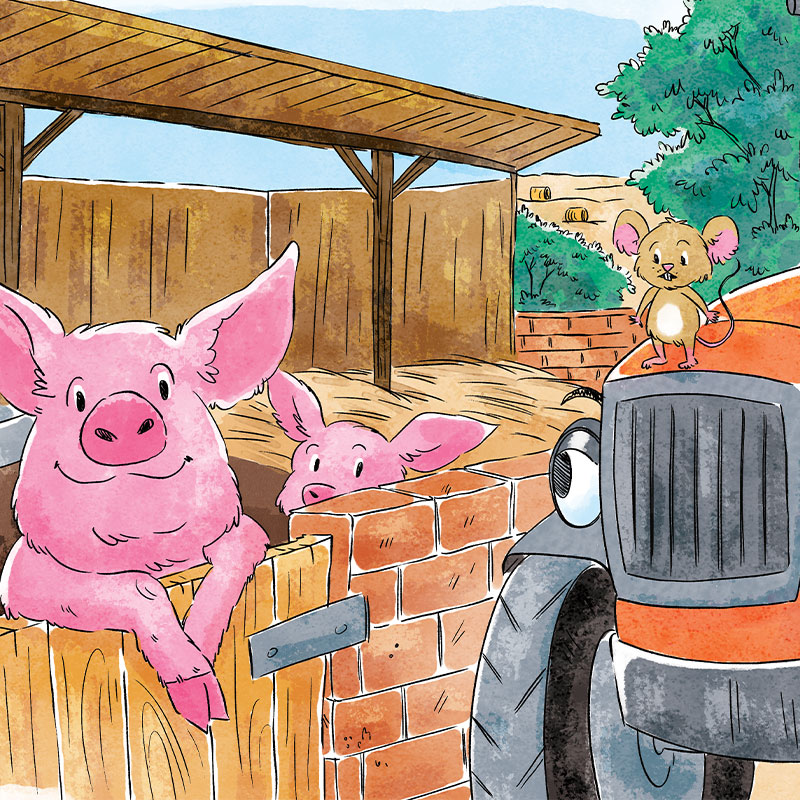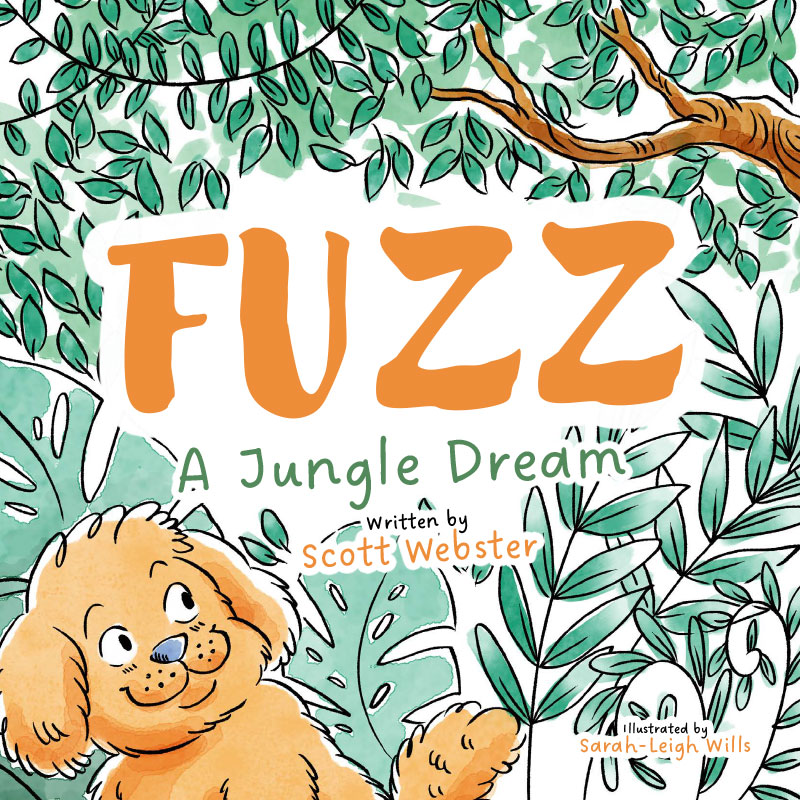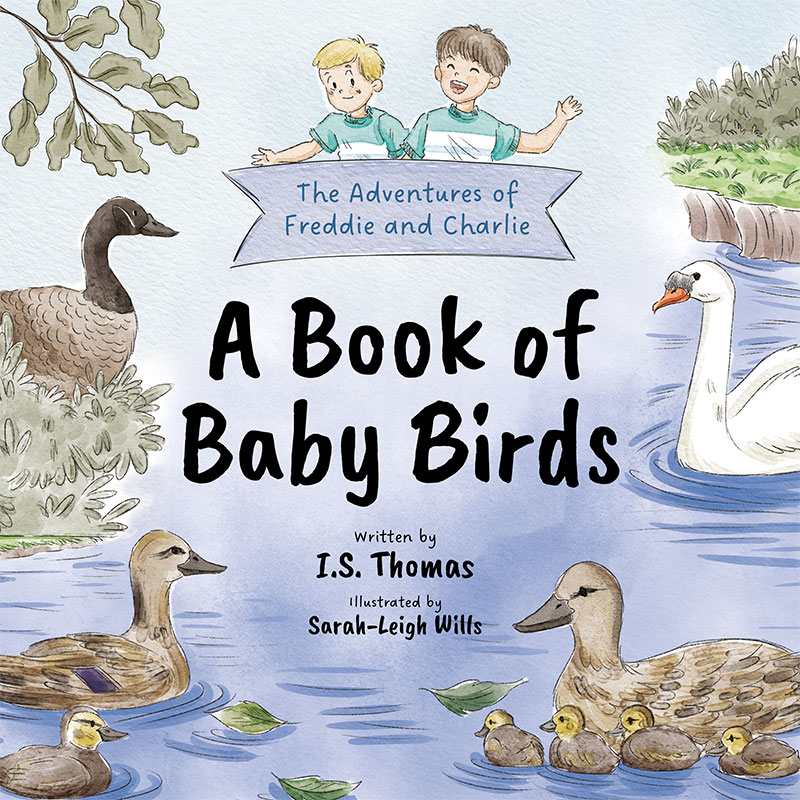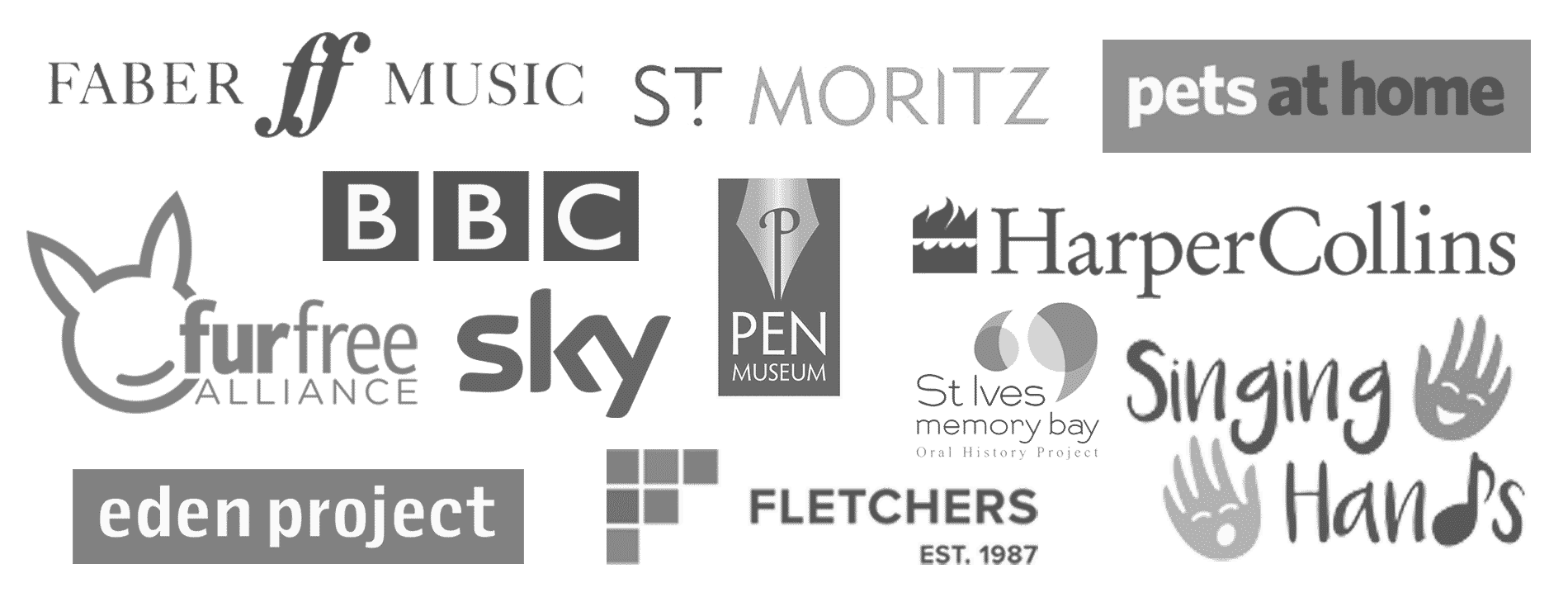Writing a story is generally considered the hard part of writing, but the details are the part that make a story believable, and the easiest part to get wrong!
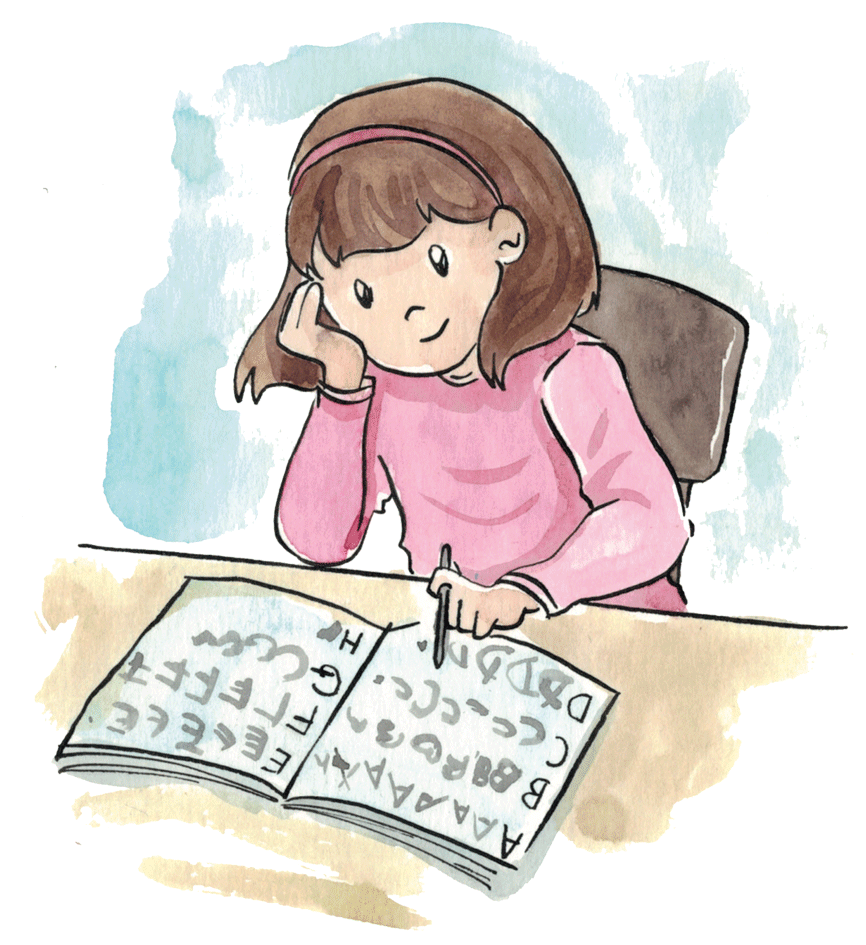
When creating a story we often think of plot; telling the story and creating a narrative arc. But one of the best places to start with any story is getting to know the characters. You may have an idea about the plot and story, which is great, as that’s where you’re going to set the scene and spin the yarn. But how will you know what’s going to happen if you don’t know your characters? From Spot the Dog to Lord of the Rings, each children’s story will have characters and the author will be able to tell you about those characters; what they like to eat, how they sleep, where they work, what their favourite toy is (if you’re Spot!). But you don’t want to fill your story with lots of prose relating to these traits, or you’ll end up with something like this:
“Tommy woke up and stretched his arms above his head, pulling up the shirt of his Aston Villa pyjamas. His bedsheets were decorated with spaceships, as he loved space travel, and his alarm clock, which was ringing to say that 7am had arrived, was covered in fish and coral images. When he went downstairs, his mum had made him his favourite breakfast, toast and Marmite. He ate it all up and drank a glass of milk. He knew he had PE that day so he grabbed his PE kit, it was his favourite class at school. He also had maths and he hated maths, but thought that English was okay.”
I mean, you’re bored already, right? So how can you create a character that translates onto a page and then into your readers’ heads, without going into all the details and boring waffle? How about trying the trick of “show not tell”? Show us these things, don’t just tell us all the time:
“Tommy woke up to the shrill ring of his alarm; the colour of his starry curtains showed it was still dark out. He leaned over and whacked the alarm clock to turn it off, and one of the fish that decorated it fell off onto his NASA bedsheets. As he went downstairs for breakfast he tugged his Aston Villa pjs over his head. He was already eager to put his PE kit on for the first lesson of the day. He sighed when he remembered he also had maths and English.
“Tommy!” his mum yelled. “I just spent ages making that toast, don’t go spitting it everywhere!” Tommy sighed again and started to pack his schoolbag for the day.”
So you see, this method has allowed a lot more of the story to be told, as well as setting up a relationship between Tommy and his mother. You can tell what kind of kid Tommy is, reluctantly getting up, and sighing all morning, but eager to wear his PE kit. It’s made the writing much snappier and the actual text much shorter, and less boring.
The key to good character writing is being able to build up the character before you write the story. Let’s use Tommy as an example. You want to write a profile about him, so you’ll need his age, his hair colour, eye colour etc. You’ll want to know what he looks like, but also how he dresses, what his favourite shoes are. Does he wear these because all his mates do, or is he a maverick, goes it alone and doesn’t follow fashion? Leading on from this, who are his friends, does he have many? What’s his school like, does he enjoy it? Which lessons does he hate? Who are his family, does he see his dad, is he an only child?
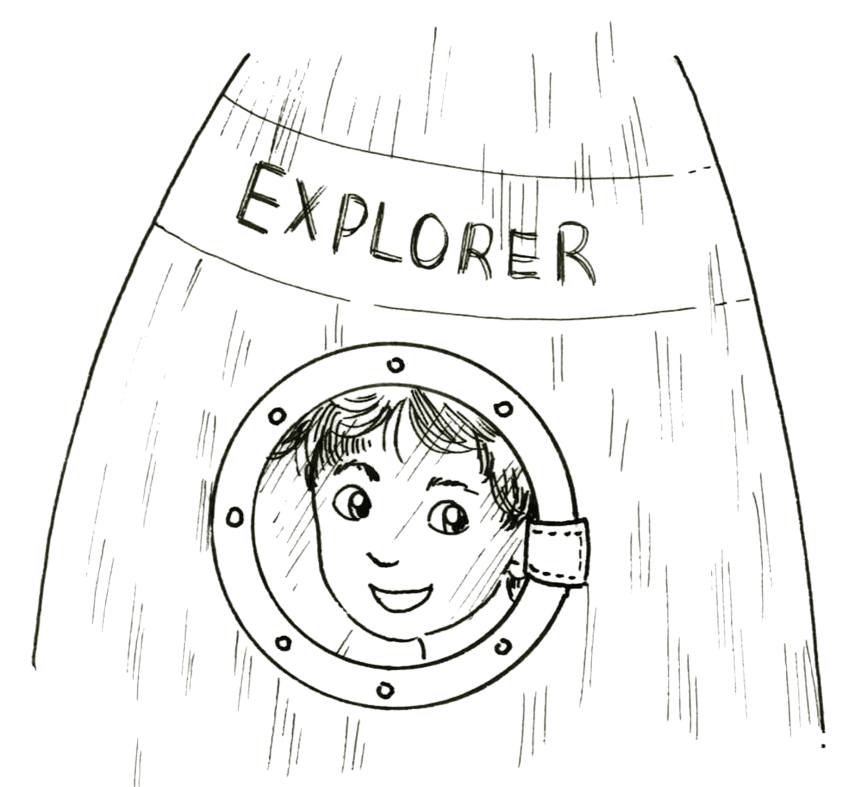
Once you have a character biography, as they are sometimes called, you can then start to work out which parts are relevant to your story. Does it make any difference at all if his bedsheets are NASA? Does his choice of bedsheet show us anything? Well, in this case it shows he’s a bright lad, and probably closer to a teenager than younger child. But his fish alarm clock points at him not quite being at the age where he’s left his childhood behind, and his football team PJs show you that he’s sporty. These are relevant building blocks for your character, but it doesn’t mean you need to bring them up again and again, unless Tommy in some Bend it Like Beckham story that requires him to be football mad and really into a particular team.
Animal Characters
Particularly when working with an illustrator, you will find you need to know your character better than anyone else. The first question you’ll need to ask yourself is, what is my character? In many children’s books the characters are animals. However, how “animal” do you want them to be?
“One of the reasons A. A. Milne’s characters are so brilliant is that their individual characteristics are entirely human. As a group, the characters in Pooh form a typical community in which any one of us might live.”
How to Write For Children – and get published. Louise Jordan.
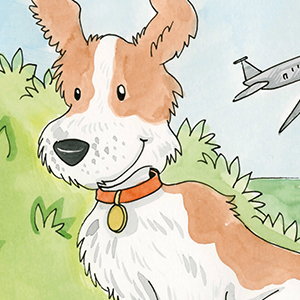
Each character in Winnie the Pooh represents a part of our society, in the same way that TV show Friends uses the main characters to show an exaggerated aspect of any one person’s character. Everybody knows someone who cleans like Monica, or a ditzy Phoebe, but equally they do represent aspects of everyone’s characters split into each character, so we relate to every character on some level. As with Pooh, each society has its wise Owl who gets it wrong quite often, a gloomy Eeyore or cheerful Pooh. These examples show that, even when you are writing about animals, you do need to treat them as you would a character that is human. The character will come to life if you anthropomorphise them; that is, give them human characteristics. So your horse that talks but doesn’t do much else won’t be a character we can believe in, but make her a talking horse that loves wearing straw hats with ribbons and always says “thank you” when she’s given a carrot and she already starts to wake up as a character in the story.
It’s important to remember this level of characterisation, even if you are “only” writing a picture book with little text. As with short stories, the less text you have to work with the more selective you have to be and the fewer words you have to work with to create characters that will come to life. You cannot rely on illustrations to create character! Sarah will illustrate the character you describe to her. The more characterisation you can get into your story, the easier the task is for Sarah and then the easier it is for you to write a better story.
A good trick with animal characters is to base them on someone you know. This could be a rabbit who wears a sweatband and has big hair, a beard and loves doing a morning workout, or a pair of frogs, one with silver hair and one with blonde, who love talking to people about their lives. Or it could be based on your mum, a friend, or the person who works in your corner shop. It may even be easier to use someone you don’t really know too well, as then you can be objective. But you don’t have to copy that person, just use a few characteristics to be able to expand on that character. The actual character usually evolves through story writing anyway, so it changes enough that your mum shouldn’t be able to spot herself!
“And, as in life, we can see the people around us, but we need a mirror to see ourselves.”
How to Write For Children – and get published. Louise Jordan.
Human Characters
One of the main problems with human characters is writing yourself. Whilst many writers can create supporting characters, like the friend group or classmates, we often base our hero or leading character on ourselves. The main character looks a bit like you, talks a bit like you, and has your opinions and reactions to situations. This makes sense, as you know you better than anyone, and you need to know your main character as well as you know yourself. However, this does make for a rather one-dimensional character who becomes the most boring person in the story. And, as in life, we can see the people around us, but we need a mirror to see ourselves.
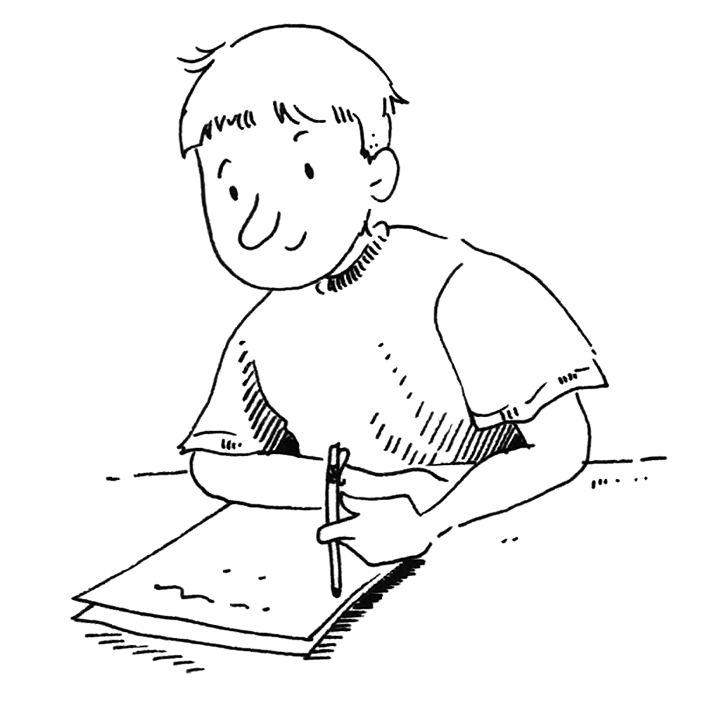
Why not use a photograph or drawing of yourself, or the person you are basing the main character on, to help your writing? Photographs can be a wonderful stimulus for some writers. Grab a few magazines, or scroll through the news online, and see if any photos grab your attention. Have you got any old family photos that you’ve always been captivated by? Perhaps these would be a good starting point to help begin to develop the character. Maybe you have one of your old school photos hanging around; all those rows of kids’ faces can give you some great ideas for different characters. But as mentioned earlier, don’t just describe your character in details like:
“John had brown hair and a freckle on his nose. That day he had worn his favourite athletics kit to practice his gymnastics, and his chin was strong but not pointy.”
Not only is this SUPER DULL for a reader, as explained earlier, people simply don’t see this when they look in a mirror. Look in a mirror now, and try to write what you see, or say aloud what you are looking at. Because most people see their reflection daily, you won’t notice your hair colour, but you will notice if your roots need doing. You won’t see a freckle, unless someone you love has recently kissed it. You won’t see your outfit, but you will notice if it looks good on you. This is the kind of detail readers want, they don’t care for a list of physical attributes:
“John ran a hand through his tangled brown hair. He poked at the freckle on his nose that he had hoped would fade as he grew older, and pulled at the tight gymnastics top which always rode up too high. He knew the girls who sat behind him in PE laughed at his exposed tummy.”
Already we care a little more about what John is up to, why he cares about the girls, that he feels awkward and uncomfortable, and not once have we listed what John actually looks like. But his character has already been described from how he reacts and thinks. Bring a character to life with smell, sound, feel, likes, dislikes.
“Have you noticed… how often characters in children’s fiction are portrayed as liking a particular food? Popeye was mad about spinach; Paddington Bear’s staple diet was marmalade just as Pooh’s was honey”.
How to Write For Children – and get published. Louise Jordan.
Food is something all of us can relate to! We immediately have a reaction to food, we love it, we hate it, it reminds us of being children, it reminds us of our wedding day. Everyone can relate to food, and it can be a useful way to give a character a USP (unique selling point). Try to steer away from your character being mad about brands, or certain unhealthy foods. Brands can be tricky sometimes to write about; people have associations with certain brands of food, for a start, and also you don’t want to get caught up in legalities. As for unhealthy food, it’s likely your book won’t be picked up by a publisher if it’s encouraging kids to scoff a tonne of chocolate!
So try to write a character bio, for your own reference. Try it for your hero or heroine first. It doesn’t need to go on for pages and pages, but try to think of them from a different angle than just “he has blue eyes and blonde hair”. Of course, these are important things to know, and Sarah certainly needs to know this to illustrate them, but try to really get a feel for who you are writing about. Why are you telling this story about them?
Keep your eye out for more blogs coming soon, covering lots more aspects of writing your story! Got a request for a topic? Drop us a message on Facebook, Twitter or Instagram or email us, hello@happydesigner.co.uk. Happy writing!

